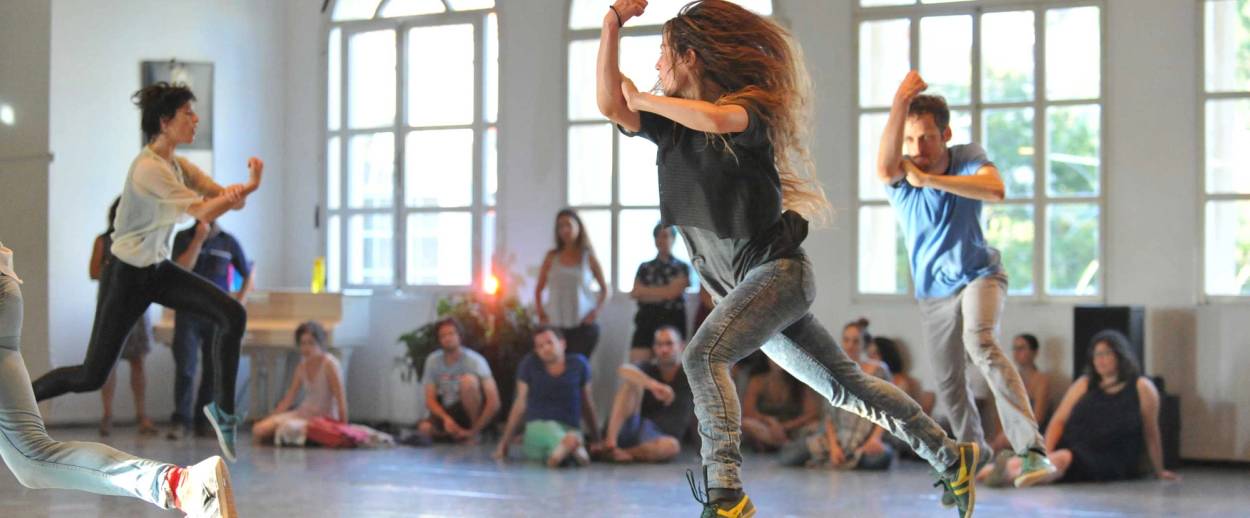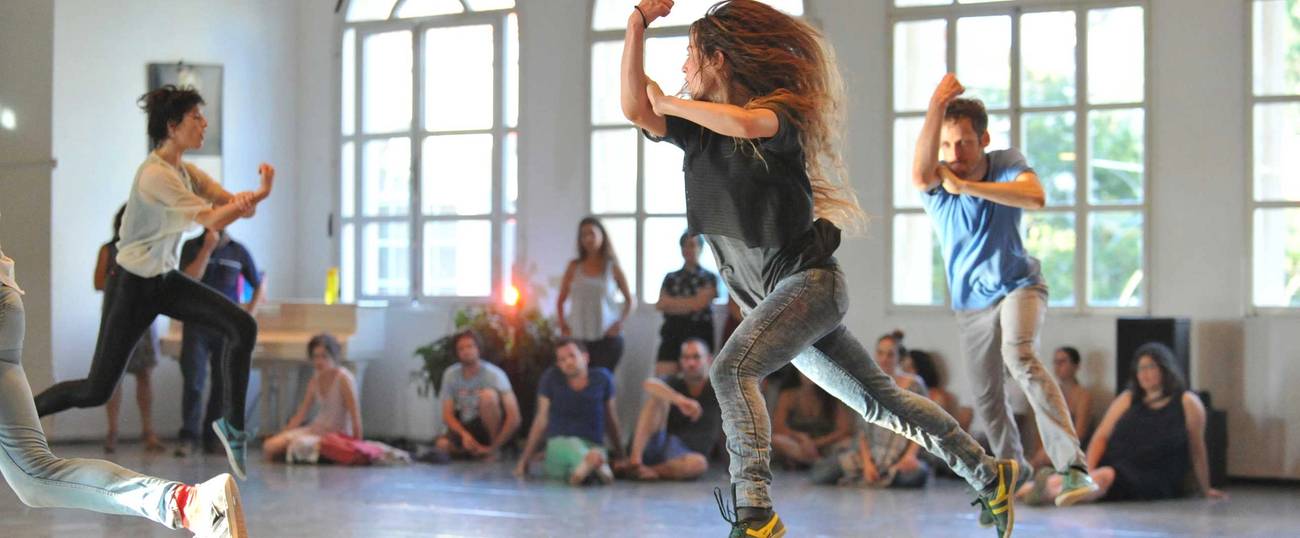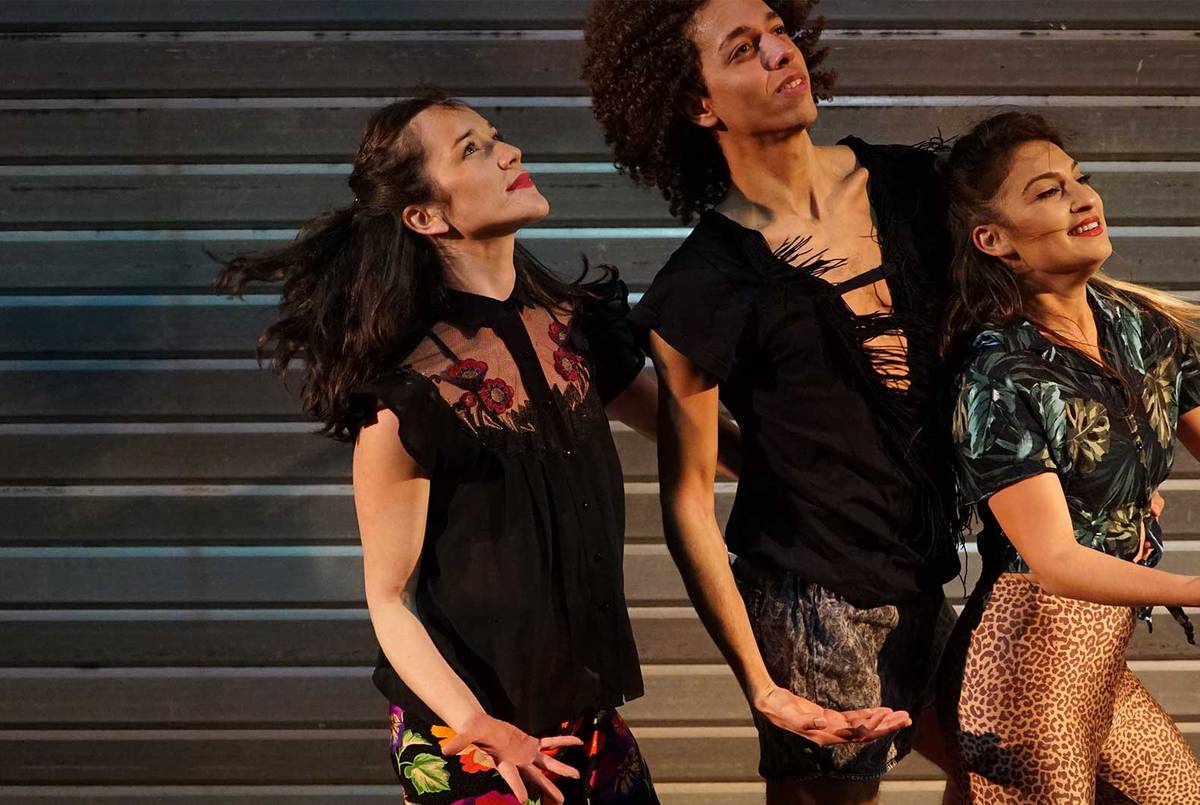New Israeli Dance, from Yasmeen Godder’s CLIMAX to Elad Schechter’s Bar-hopping Exploration of Bodies
Rewriting the rules on what a dance performance can be




Most Israeli choreographers are schooled in folk dance, explore elements of the country’s political conflicts, have a penchant for raw, visceral movement, and perform their work in a traditional proscenium theater. Two choreographers stand out for their unique approaches to engaging the dance audience. Yasmeen Godder and Elad Schechter break down the theater’s mythical “fourth wall” and are rewriting the rules on what a dance performance can be.
Godder is a veteran creator of dance and theater installations, and CL IMAX is a greatest-hits showcase of her 15-year career. A recent performance/installation of the work in New York had an awkward beginning. The audience, milling about in a large white dance studio, was given instructions by a presenter from the theater: “Sit or stand anywhere you want, and come and go as you please.” The crowd took seats in corners or leaned against the wall. As the wait continued, tension rose. The audience scanned each other’s faces intently, attempting to figure out exactly when and how the show would begin.
A marathon three-hour performance featuring vignettes from past repertory, CLIMAX is a rebellion against the traditional order in a performance piece. There is no high point or set climax. The event begins and ends without formal announcement, and leaves the audience constantly questioning what will occur next.
In the performance I attended last October at Gibney Dance’s Agnes Varis Performing Arts Center, six dancers, dressed in jeans, T-shirts, and tank tops, performed as an ensemble and in varied solos, duets, and trios. Moving to a score of ambient sound and silence, they galloped, marched, and crawled throughout the studio, jumping on one another, and wrapping around each other’s torsos. The dancers moved with exacting precision: they vocalized, gasped, and coughed; their eyelids quivered; their tongues twisted; they screamed and growled, as if flipping through a catalog of bodily responses. The intensity of the smallest gestures was amplified by the audience’s closeness.
CLIMAX’s performers made physical contact with the audience, looking into their eyes, rolling over a spectator’s leg, circling a seated group, and at times forcing an entire section of people to vacate an area of the studio to accommodate a sequence of runs and jumps. The openness of the studio space and the absence of dark lighting heightened a sense of self-awareness and even paranoia among the crowd. The spectators viewed each other’s responses to the performance as much as they watched the movement itself.

“I definitely wanted to push my audience with CLIMAX, and challenge them as a group to commit and share in the performance experience,” said Godder in a phone interview. “I’m fascinated by human behavior in a performance setting. What happens to the audience during a performance—what is their biological reaction and what is the impact?”
Medium-height, slender with curly brown hair that she tucks back into a low ponytail, Godder has a serene and gentle face. The ferocity of her choreography contradicts her calm demeanor. Since her first forays into choreography as an NYU master’s student, her work has focused on the connection between mind and movement. Influenced by a range of artists including 1930s German expressionist Mary Wigman, 1960s postmodernists of New York’s Judson Church, and current dance theater artist Ellis Wood, her work distills and magnifies physical embodiments of the emotional experience.
“It’s so much more than a dance work. CLIMAX is a sociological study,” said Uri Shafir, a performer in the piece. “Yasmeen’s work is about investigating the masks that we wear. It is about how our movements explain our emotions and relationships. Performing in her work takes stamina. You need to dig into your emotional states and then flip and change them like someone changing the channels on a television.”
CLIMAX premiered at the Petah Tikvah Musuem of Art in 2014 and was performed in Russia, Austria, and Romania in addition to New York. Godder considered the work a shift in her focus, and her subsequent works, Common Emotions and A Simple Action, which will be performed in Tel Aviv on March 9 to 18, all consider different aspects of the audience’s participation and perceptions.
Unlike Godder’s deeply psychological performance theater, Elad Schechter’s work is rooted in classical and modern dance forms. He trained extensively in ballet and release technique, and his aesthetic is supple and sinuous, evoking meditative martial arts. Artistic director of the C.a.t.a.m.o.n dance group since 2012, he focuses a large part of his choreography on creating dialogue and openness about the body in his hometown of Jerusalem.
In 2014, he served as creator and producer of From Jaffa to Agripas, a dance festival set in the Majane Yehuda Market in Jerusalem. The festival, which will be in its fourth year this coming October is a free event that features several choreographers and is curated in the market’s bars and restaurants. Schechter considers the market a meeting place of communities—the young and the elderly, the Jews and the Arabs, the secular and the religious. The choreography is coordinated with each bar owner and the themes often connect to aspects of the venue. Dancers perform with extreme proximity to the audience, dancing on bar counters, seats, and in doorways.
“The theater is a sacred space, but I find it at times limiting,” said Schechter in a recent interview. “The formality of the theater doesn’t have enough connection with real people, especially socio-economically. If you can’t afford to buy a ticket then you are missing out on a whole genre of art.”
Godder is an institution in contemporary dance and is recognized worldwide for her deeply evocative work. Schechter is a newer voice whose groundbreaking experiments are bringing modern dance performances into public spaces: Each piece runs for a short 20-minute performance and is repeated throughout the evening. His company performs throughout Israel, and has a Los Angeles premiere of a new work, Tech it Away, on April 1.
“In general, people in society, and especially in Jerusalem, are closed off from their bodies,” said Schechter. “Our projects intend to engage new audiences, open up borders, and touch on taboo topics. When we bring our work outside of Jerusalem, we are also bringing the questions and complexities of our home community with us.”
***
Read more of Stacey Menchel Kussell’s dance criticism for Tablet magazine here.
Stacey Menchel Kussell is a culture writer who frequently covers Israeli contemporary dance.